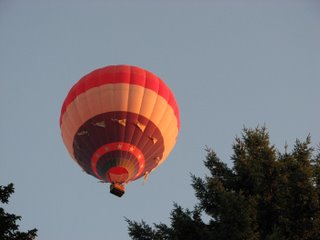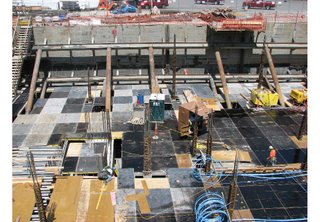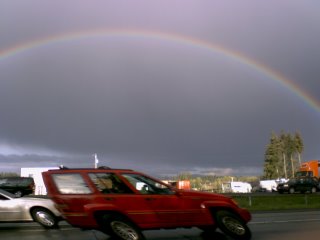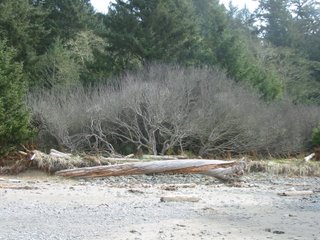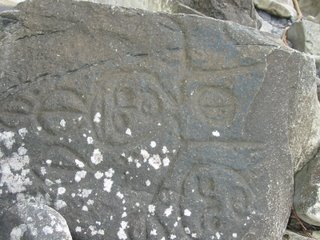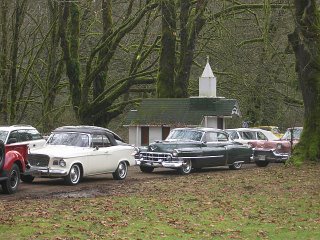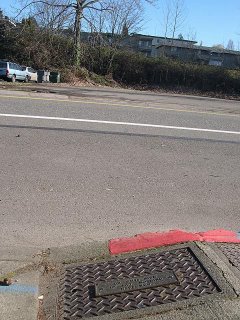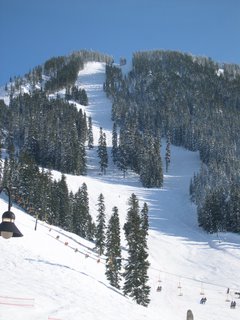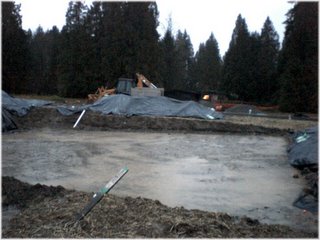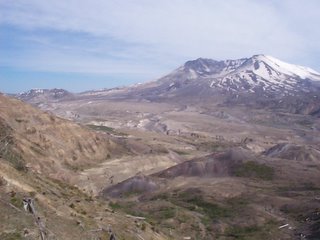
Seattle is on the
Ring of Fire, a massive curve around northern part the Pacific Ocean. As the tectonic plates move, we develop
neighbors who like to party. Five years ago, 28 February 2001, Seattle had a reminder of our party-hardy neighbors: an earthquake. Everybody has their story to tell and everyone remembers exactly where they were when "it" happened.
I was in the office of my boss, having a routine 1x1 meeting with him. The first rumble hit and it was like a heavily loaded cart rolling down then hallway - just a loud rumble. A few seconds later, a louder rumble with a distinct floor motion hit. I asked Gene (my boss), "Is this an earthquake?" "No, don't be silly." By the time he got the "...lly" out of his mouth, we were both standing in the doorway of his office, looking at each other, because the third rumble hit and hit and hit. It seemed to go on forever. There was a fellow outside Gene's office, sitting at his desk and staring up at a light fixture that was swaying back and forth. "Gee, you really ought to get away from that and under your desk." "Huh? What?" he said as he watched the fixture sway. It seemed to go on forever, but it probably lasted five seconds of so.
Gene and I walked around the floor to inspect any damage and to ensure that anyone needing help or attention got it. Luckily, we were in a new building so most of the damage was to items that slid or bounced off desks to the floor, and a couple of bookcases that weren't properly secured to the walls. I waited around until the official all-clear announcement. I had to wait until the city bus lines started running again.
The bus ride was a little strange. The city was silent, nearly still. The route for the bus I needed took me into the
Seattle Metro Bus Tunnel. I must say it is a bit odd to ride through a tunnel in the aftermath of an earthquake. No obvious damage - the engineers had checked it out before re-opening it, of course - but one feels like the ultimate gambler to go below the earth after an earthquake.
Next day? Back to work.
Note: it is normally a
bad idea to stand in a doorway during an earthquake. Much wiser to get under a table or sturdy piece of furniture that's away from glass windows. In this case, the door was a sliding door rather than a swinging door, so the response was reasonably safe. A conventional swinging door tends to flap in harmony with the earthquake (literally), slapping you out of the way should you attempt to interfere with its path. Avoid doorways, head under a table or desk.
 On 22 April, 2000, our family began to read Harry Potter. Our young son had started reading but had settled himself into relatively lightweight stuff. He would read the youth editions of Pokemon and Star Wars novels, but refused to touch anything in hardback or that might "look hard". We had planned a visit to Victoria, BC, a ferry ride from Seattle, so we took along the newly released Harry Potter and the Sorcerer's Stone. On the boat ride to Victoria, we read chapters from Harry Potter. When the (adult) voices wore out, we stopped reading. Our young non-reader was so incensed that he grabbed the book and finished reading it himself, although we had to continue reading aloud for his younger brother. Thanks, Harry!
On 22 April, 2000, our family began to read Harry Potter. Our young son had started reading but had settled himself into relatively lightweight stuff. He would read the youth editions of Pokemon and Star Wars novels, but refused to touch anything in hardback or that might "look hard". We had planned a visit to Victoria, BC, a ferry ride from Seattle, so we took along the newly released Harry Potter and the Sorcerer's Stone. On the boat ride to Victoria, we read chapters from Harry Potter. When the (adult) voices wore out, we stopped reading. Our young non-reader was so incensed that he grabbed the book and finished reading it himself, although we had to continue reading aloud for his younger brother. Thanks, Harry!





















